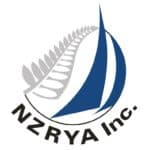The A Rig of the IOM is the most commonly used rig that has to cover the biggest range of wind from drifting conditions to about as much as the boat can handle. This is a dramatic range it has to cover and we know from big boat sailing that we like to trim the sails quite differently in the light air to power the boat up and get some feel in the helm.
General Philosophy. What do we want from our IOM A Rig- As a generalisation I think in RC sailing we need to tame this big boat approach and have a sturdy set up that needs little change when sailing from from light to fresh conditions. Remember we are not on the boat to micro manage the sails and helm. Often we are sailing in conditions that are light but gusty due to the wind obstructions at the lakes we sail. Also the balance of the our IOM is critical, so once we are happy with the feel of the boat, we dont want to through it off by making a big adjustment to something. Keep it simple. Try to find a set up that stays friendly and well balanced through the range. This is not easy since inherently the IOM can have Neutral to lee helm in the light, nice balance mid range and can get some lee helm again at top end. But our race boat needs to tack and accelerate well, and handle gusts, shifts and waves as best it can. This is often more important than the straight line speed and pointing, a philosophy that I think a lot of us get hung up on. We can only beat our chests when winning the pointing competition. Its the finish line that counts.
So for general A Rig set up we need to have a rigid framework –
Reasonable forestay tension- This is created by the permanent reverse pre-bend that we induce into the mast before set up. We straighten the mast by adding backstay tension. Backstay tension gives us forestay tension. All good, but this pre-bend must be aligned to the centreline of the boat or it can throw the top of the mast off sideways. So care is needed when making the up the mast and locking it into the boat.
A combination of side stay tension and spreader angle can also help with forestay tension by controlling the middle of the mast fore and aft. Angle the spreaders back and we pump the middle forward, angle spreaders forward and we pump the middle mast back.
Centred Sideways and Tort- Sight down the mast to make sure the mast is not off to one side or the other. Sight this on both tacks to be sure and keep the stays firm. If the mast bends off to one side, then your main leech will be different tensions from tack to tack throwing the balance of the boat. Loose side stays dont seem to work. You may choose to have them looser in the light air to soften the forestay a fraction, but definitely not slack. You will sag the rig to leeward and loose power.
Mast bend to suit Mainsail- The mast must suit the mainsail and stays the same from light air to fresh. This is unlike big boats. If you over bend the mast you will pull the guts out of the mainsail and this can loosen the leech affecting balance. I have found that the IOM performs best when the mainsail takes its natural shape off the mast. Adjust the amount of shape with foot round and luff tension.
We can use the backstay, mast ram and spreader angle to control the mast bend until it looks right.
Thats all for this week.
Happy sailing
